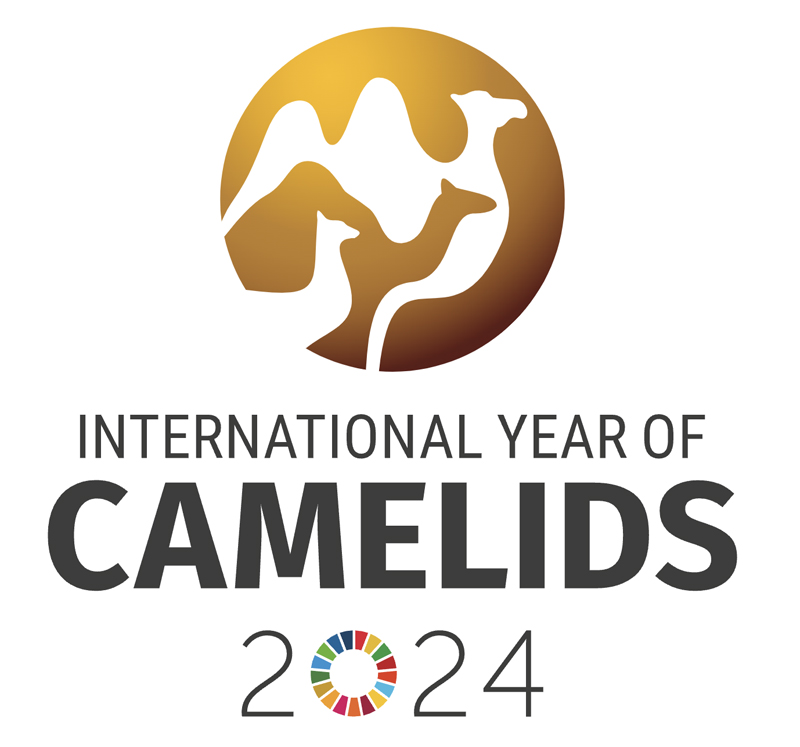Dromedary camels and MERS-CoV: filling knowledge gaps
Middle East Respiratory Syndrome Coronavirus (MERS-CoV) is a threat to public health globally and can be a cause of severe respiratory disease in humans.
The disease was first identified in 2012 in the Kingdom of Saudi Arabia, and since then, human cases have been reported in 27 countries across the Middle East, North Africa, Europe, North America and Asia. The majority (about 84 percent) of cases have been reported by Saudi Arabia and all primary cases were exposed in the Arabian Peninsula. MERS-CoV is transmitted from person to person through close contact, especially in healthcare settings although transmission has been limited outside of such facilities. No vaccine or specific treatment is currently available with several under clinical development.
Camels are spread widely throughout the world, mainly in arid areas, and serve important economic, livelihood, nutritional and cultural purposes. Dromedary camels are well-documented as a natural host of MERS-CoV and it has been found in this species in several countries in the Middle East and Africa. Camels become infected with very mild or no clinical signs though can be a source of infection to humans, through respiratory route, but it is unknown whether the virus is transmitted to humans via other routes.
Knowledge gaps and research needs
A substantial body of literature has been published and enabled better understanding of the complex epidemiological features of MERS-CoV. However, fundamental knowledge gaps remain, and scientifically based decisions and risk management measures are based on precautionary measures and good hygiene practices. Further scientific studies to better understand the dynamics of MERS-CoV in the camel population and mode of transmission between camels and humans are critical for developing appropriate measures to reduce the risks to public and animal health.

Coronaviruses are a large family of viruses that can cause mild to severe illness, usually gastrointestinal or respiratory. MERS-CoV is one of the three zoonotic coronaviruses to have emerged with global impact over the past two decades, alongside severe acute respiratory syndrome coronavirus (SARS-CoV) and SARS-CoV-2, which caused the COVID-19 pandemic.
MERS-CoV: A challenge at the human-animal interface
The challenges of MERS-CoV at the human-animal interface can only be met using a One Health approach involving multi-sectoral collaboration, communication and cooperation.
FAO plays a coordinating role to reduce the risk of MERS-CoV at the human-animal interface by working with global partners such as the World Organisation for Animal Health (WOAH), the World Health Organization (WHO) and the United National Environment Programme (UNEP). This partnership convenes joint technical and expert meetings to advance knowledge and guide policy.
At a national level, FAO provides technical expertise to improve capacity for surveillance, laboratory diagnostics, camel value chain analysis, behavioural studies, food safety, and risk mapping and analysis. In addition, FAO provides guidance and promotes good practices and biosecurity measures to prevent human transmission or consumer protection. FAO also regularly monitors the MERS-CoV situation in humans and animals, issues monthly updates, publishes qualitative risk assessments, provides access to information and knowledge, and promotes research development with institutions to address knowledge gaps in the transmission of MERS-CoV in animals and from animals to humans.
Project successes in Africa and the Middle East
FAO assists countries in developing communication strategies to ensure appropriate information reaches the public on MERS-CoV and avoid possible negative impacts on the livestock industry. FAO has implemented several projects on MERS–CoV in Africa and the Middle East. Cross-sectional and longitudinal surveillance studies were conducted in four countries - Egypt, Ethiopia, Jordan, and Kenya – at different nodes along the camel value chain including breeding herds, live camel markets, quarantine stations, and slaughterhouses. Camel value chain analyses were also carried out to characterize the sector.
The results showed widespread detection of MERS-CoV antibodies in the camel population. These studies provided evidence on the zoonotic potential of the region-specific circulating clades and generated useful information to reshape the future surveillance and response strategies for MERS-CoV in the region.
Capacity building for early detection and response
Approximately 113 laboratory staff in four national veterinary laboratories have been trained on MERS-CoV diagnostic testing while 255 field personnel received training in sample collection and transportation, clinical examinations and data collection. In implementing the MERS-CoV projects, FAO works closely with funding partners, national governments, academic institutions, collaborating centres, and producer associations.

